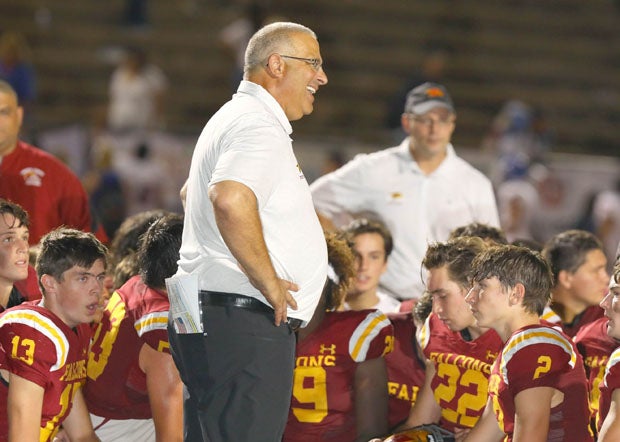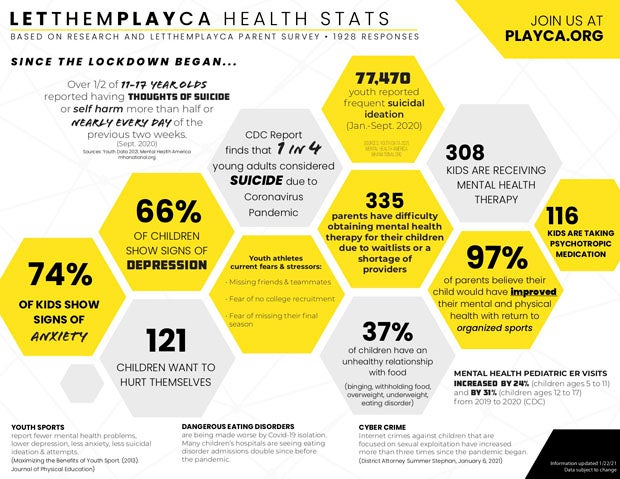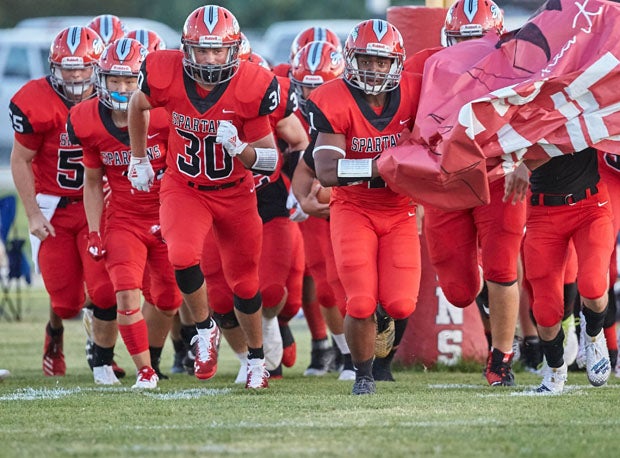Perhaps there's a ray of hope for California high school student athletes, coaches and parents. Perhaps.
Gov. Gavin Newsom on Monday lifted mandatory stay-home orders which opened the door for sports slotted in the purple tier (widespread coronavirus transmissions) — like cross country, golf, swimming and tennis — to begin contests.
Small pockets of the state already had those orders lifted, but now those low-risk sports can compete in all areas — even in the densely populated regions.
In El Dorado County, about 40 miles east of Sacramento, the Sac-Joaquin Section's first sanctioned California Interscholastic Federation sporting event took place Monday, a four-way cross country meet at
Union Mine (El Dorado).
Also encouraging to many was a breakthrough from the recently formed 700-member Golden State HS Football Coaches Community, which met with Newsom over the weekend.
According to multiple reports,
Torrey Pines (San Diego) coach Ron Gladnick met one-on-one with Newsom, which led to a 50-minute Zoom meeting Sunday between State Executive Secretary Jim DeBoo, Gladnick and Bay Area coaches Patrick Walsh of
Serra (San Mateo), and Justin Alumbaugh of
De La Salle (Concord).

Ron Gladnick, Torrey Pines football coach
File photo by Steven Silva
"We had a good first conversation, and we are looking forward to future dialogue with Gov. Newsom, Mr. DeBoo and the CDPH (California Department of Public Health)," Walsh said.
Last week, the coach's group along with the 46,000-member parent-driven Facebook group "Let Them Play CA," sent a letter to Newsom requesting to meet to "provide the best path forward" for the state's youth athletes.
The advocacy groups asked that youth sports resume immediately and to be detached from the current color-tiered system.
The groups want these factors to be considered: other states' success, the safety of California football workouts, the impacts on youth mental health and lower-income students.
On Sunday, DeBoo was presented with data compiled by the organization to show that all outdoor sports are being done in a safe way across
33 states that completed fall football seasons, including Michigan on Saturday.
"We let the governor and Mr. DeBoo know where we stand and what our intentions are from our non-political stance of getting kids back on the field," Walsh told the
Bay Area News Group, noting that DeBoo is a Little League coach who misses the interaction on the field as well. "He understands what we're going through.
"It's good to know we can have access to the points in government that will actually help us make this decision for the kids."

Among the data given to State Executive Secretary Jim DeBoo during Sunday's meeting with the Golden State HS Football Coaches Community.
How that all translates to getting California players on the respective fields is still way up in the air.
Some things that have changed from the CIF's July plan to squeeze three seasons into two include:
• Rescinding its temporary rule to let athletes and coaches participate with more than one team in the same season, citing new state safety guidelines.
• Extending applications for athletes to file for a financial hardship transfer because of coronavirus issues through the end of the school year.
• Canceling championship events in order to extend regular seasons for more schools. The sections have largely followed this pattern also, including the massive 581-school strong Southern Section.
• Giving leagues the freedom to pick and choose sports in the purple tier to play in either Season 1 or Season 2, and adjust schedules accordingly.
Most coaches and players just want some semblance of a season, no matter how short.
Clearly, every section and region has its own issues, concerns and challenges, from health tiers to hospitalizations to coronavirus cases to in-person learning requirements via school districts and unions.
Ultimately, it's the state's Department of Health that will decide the fate of high school sports in California. Under the current tier plan, sports that can be played per tier based on virus cases:
• Purple (widespread): Cross country, golf, swimming, tennis, track and field, skiing.
• Red (substantial): Baseball, softball, girls lacrosse, field hockey.
• Orange (moderate): Football, badminton, gymnastics, boys lacrosse, soccer, volleyball, water polo).
• Yellow (minimal): Basketball, competitive cheerleading, wrestling).
Even though virus cases appear to be dropping, 54 of the state's 58 counties are still under the purple tier, with three in in red and one in orange.
Mandatory not discretionary
CIF officials continue to plead with the CDPH to place all sports in either the purple or red tier in order to play.
That's why coaches in sports placed in the orange or yellow are losing hope to play at all, and perhaps why some have taken matters into their own hands.
On Jan. 16, with stay-at-home orders in place, two Orange County private school football teams played, though coaches from Capistrano Valley Christian and Calvary Chapel later called it a glorified scrimmage in uniforms and equipment.
"Fired up to be 1-0, but more proud of the adversity these young men have pushed through and the challenge they have accepted," Capistrano Valley Christian coach and athletic director Eric Preszler tweeted.
Last week, the CIF sternly warned of sanctions to include but not be limited to "fines, suspension or dismissal from membership."
In a memo, Executive Director Ron Nocetti wrote the CIF is "bound by the orders, regulations, and guidance" of the governor, state health department and state department of education, "and all leagues, districts and schools are expected to comply with their decisions."
The vast majority of the 1,600 CIF schools have complied completely with orders, Nocetti wrote.
"While the CIF understands that the postponement of interscholastic athletics due to the COVID-19 pandemic has had an adverse impact on all of our member schools and student-athletes. … compliance by our member schools with the CDPH's guidance regarding youth sports is mandatory, not discretionary."
Southern Section Commissioner Rob Wigod decided Nocetti's warning was sufficient and didn't punish the schools that played, saying: "I believe they completely understand the relevant bylaws that are involved, and I am confident that this will not happen again."
At the opposite end of the heavily populated Southern Section, where 35 percent of the state's schools reside, the rural Northern Section has its own issues.
On Wednesday, its Executive Committee drew up and approved a motion that calls for "All sports to start when state and local health departments allow for competition, leaving open a possibility for a section-based bowl or tournament."
The committee recommended a loose two-season breakdown of Jan. 25 through March 19 and March 29 through the end of the school year as time frames for sports to compete.
Football, however, remained the lone sport with a firm end date of April 30, a directive set forth by the state. That gives a three-game football season a chance to start as late as April 1, as athletes must have 10 practice days logged before competition starts.
"We want the kids to play and that's why we opened it up," Northern Section Commissioner Liz Kyle told
ShastaCountySports.com. "If your county allows you to play baseball or softball, we don't want to say ‘No, you can't play until March 29.' That's why we agreed to let schools play whenever they're allowed."
Editor Aaron Williams contributed to this report 
East Nicolaus is one of the Northern Section's top football programs.
File photo by Anthony Brunsman
